In 1968 political turmoil and tumult reverberated throughout America, Europe, and beyond. Marxist historian Eric Hobsbawm described this year as a signpost; almost every region of the world was affected by spectacular demonstrations and revolt. Portugal was no exception. Thousands of students from across the country organized themselves on November 25, 1968 in Coimbra’s University City. They used their physical bodies in political space and occupied state property to demand greater autonomy, and the liberalization of authoritarian policies set in place by the Salazar regime. While many critics and artists on both sides of the Atlantic fretted over the immateriality of information, protesters utilized the body’s modest materiality to bring governments to a grinding halt. This revolutionary year functions as the point of departure for Helena Almeida: My work is my body, my body is my work at the Serralves Museum of Contemporary Art in Porto, Portugal.
The early work of Helena Almeida (b. 1934) employs the formalist tools and tropes of space, volume, and shape to shepherd the rest of her oeuvre toward the political. The artist is well acquainted with the politicization of space. To this day, Almeida produces and performs in the studio of her father, Leopoldo de Almeida, who was one of the Salazar regime’s preeminent sculptors of monuments. Moreover, in addition to Portugal’s own protests, the early paintings were created in the wake of the spectacular May ‘68 protests in France (a place where Almeida lived for several years in the ‘60s). Surrounded by radical politics during that decade, Almeida’s work would be impoverished if limited to the world of formalism.
The Untitled (1968) monochrome paintings candidly reveal the surface on which they hang. Feeling the pull of gravity, a night-blue canvas undresses itself, slouching and curling as it divulges the stretcher bars that may have once made it taut. Next to this, yellow acrylic paint permeates translucent tulle, allowing us to see the wall behind through a canary filter. The placement of this pair establishes a marked tension. The thinness, delicacy, and effervescence of the amarelo painting’s materiality sets it apart from the sheer visual weight of its monochromatic counterpart, which drags the eye downward. Distinct approaches notwithstanding, both paintings frame the white cube as their foundation. In 1968, one year after art critic Michael Fried argued in Art and Objecthood that a wholly autonomous and self-sufficient work of art was integral to the project of modernism, these paintings forge another path. Almeida’s pacesetting objects revel in shared experience to invert the Renaissance trope of painting as a window into another realm. Transparency is presciently emphasized, demonstrating that the work of art depends on our world.
These paintings offer a critical point of departure, a much-needed revisionist history of the artist’s oeuvre. In 1995, Almeida’s first retrospective, also at the Serralves Museum, excluded the remarkable 1960s work entirely. Instead, that exhibition opted to inaugurate its narrative with the better-known Inhabited Paintings, a series from the 1970s in which Almeida appears to paint a passage of blue from within the photograph. With a brushstroke, the artist fogged the distinction between the photograph’s world and the beholder’s realm outside of it. Twenty years later, the updated curatorial strategy of João Ribas and Marta Moreira de Almeida positions Almeida’s early paintings as a lens through which to see anew every work thereafter. It becomes possible to think of Almeida’s spatial preoccupations as deeply rooted in painting. The year 1968 is now a definite historical turning point for the artist, a year when she broke down the dichotomy between pictorial and real space.
Aside from a brief introductory statement, the exhibition is presented without wall texts. Almeida’s work is given a license to rewrite its own history with a kind of silence. And just as her Untitled monochromes reframe the rest of the exhibition, later works of art, such as the series Hear Me (1979), function as heuristic devices that help us understand Almeida’s earlier work in new ways. In one image from this series, we see the artist, blindfolded. Scrawled across the blindfold are the words “Ouve-Me” (hear me), a reference to iconic photographs from the Iran hostage crisis. The image outlines Almeida’s ongoing concern with the world around her, not limited to the work’s formal space. This gesture, at once feminist and geopolitical, suggests that there could be politics to excavate in Almeida’s other pieces. Still, not everything from the Hear Me series is this direct. A haunting and uncanny film from the same year (bearing the same title, Hear Me) balances the other works’ potential for didacticism. With varying degrees of pressure, Almeida levies her hands, body, and face against a sheet of semi-opaque film. Her spectral presence repeatedly attempts to cross a cinematic threshold and enter the viewer’s world. Above all others, this work captures the tensions between the represented and the actual, her space and ours.
Violence to both the picture plane and the body presents a recurring theme. In Almeida’s Inhabited Drawings from the 1970s, a graphite line enters the viewer’s space when it transforms into a thread that loops out from the paper’s surface. This evokes the act of piercing. Recalling a quote from Almeida that serves as the exhibition’s title, “my work is my body, my body is my work,” the paper surface transforms into a surrogate for the artist’s own flesh. Such pieces can be read as bound up with the disrupting violence imposed by external forces, be they political or personal. Bearing in mind the question of violence, such later photographs as Black Exit (1995) take a turn toward the uneasy and suggestive. The five photographs from this set are documents of Almeida’s mature practice: private performances conducted in her studio. Yes, they are images of hands smearing pigment. But their textural, haptic quality can be viewed as a moment of aestheticized viscera.
Almeida is deserving of greater attention and acclaim outside of Portugal, consistently demonstrating how the body is a site that feels the power of politics, artistic or otherwise. This absorbing survey further underscores what should be a wider-known fact: Almeida’s art, through its conceptual and formal rigor, rivals and supersedes the contemporaneous artistic production taking place in any of the traditional “centers.” Bordering on the epic, her important work crucially shows how the body can resist the dehumanizing mechanisms of authoritarian regimes. It insists embodiment keeps us grounded in the real.

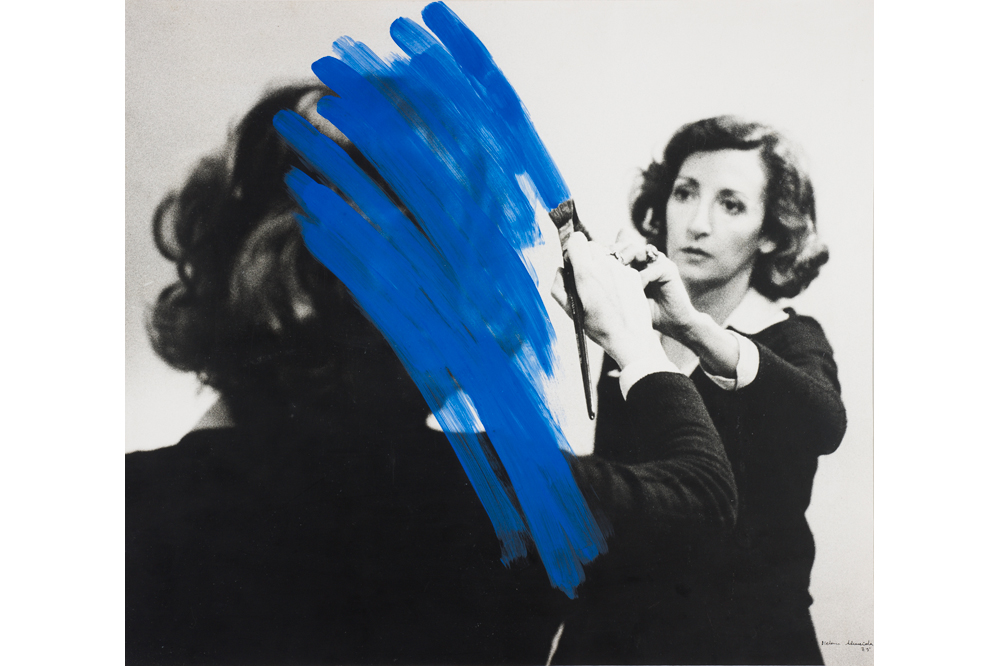
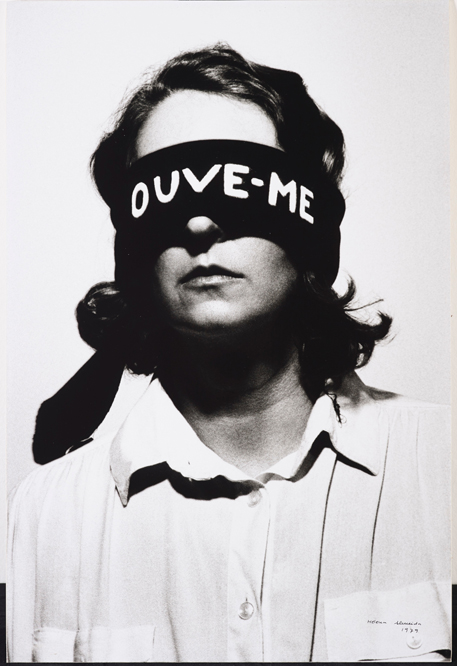
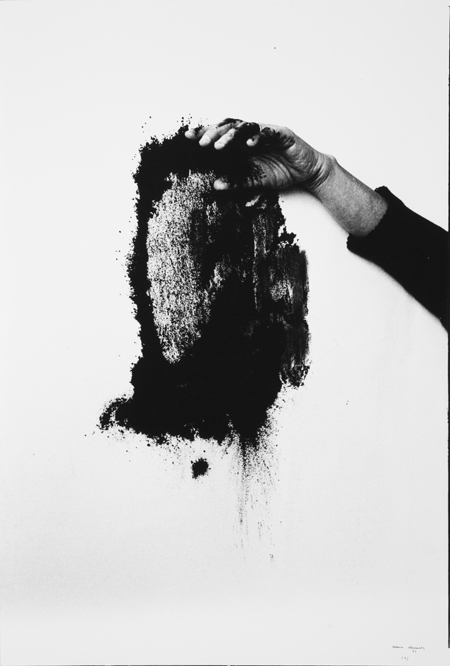
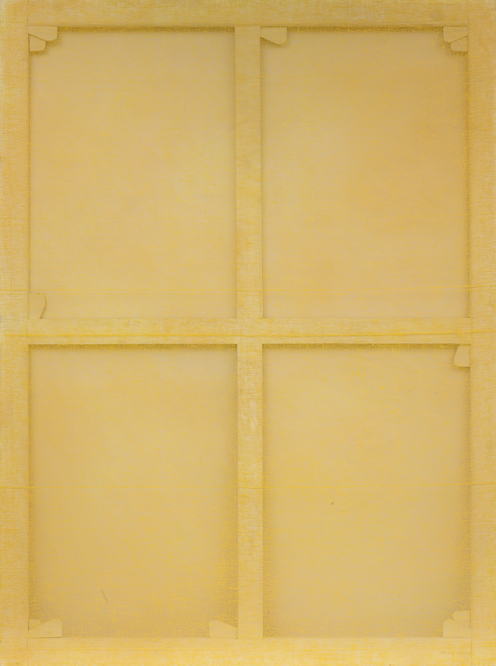





















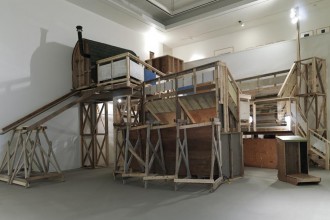
2 Comments